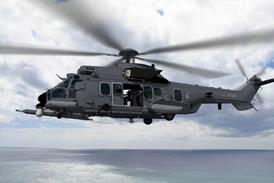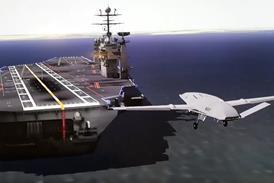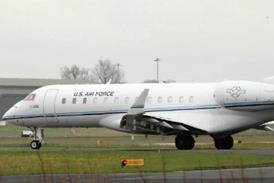Technology that allows air traffic controllers in the USA to more accurately chart the position of aircraft becomes compulsory in just over two years’ time, and the race to ensure operators are compliant will be a major focus of avionics providers exhibiting at this year’s National Business Aviation Association convention. From 1 January 2020, as part of the Federal Aviation Administration’s NextGen initiative, all business jets will have to be fitted with Automatic Dependent Surveillance – Broadcast Out (ADS-B Out) equipment to fly in controlled airspace. A similar requirement in Europe will follow in June 2020.
Latest estimates are that more than 10,000 US-based aircraft remain to be converted. And while this potential backlog of work is good news for avionics suppliers and the maintenance, repair and overhaul sector, there are worries that congestion in the system could mean that, from the start of the next decade, hundreds of jet owners could find themselves effectively grounded.
“Although the take-up slope is increasing, we are still trying to get the message out to the operators community that if they have not yet taken steps, they need to start paying close attention,” says Chris Benich, vice-president of regulatory affairs at Honeywell Aerospace. While for most operators, compliance involves a relatively simple upgrade to the aircraft’s transponder, with some also requiring an additional update to the Global Positioning System receiver, Benich warns that booking an appointment with a service centre might become increasingly difficult as the deadline approaches. “If there are still multiple thousands of aircraft to be done in the last six months, there just won’t be capacity,” he says.
In June, business aviation MRO specialist Duncan Aviation estimated that more than 2,000 business aircraft could be grounded for non-compliance, based on the current rate of ADS-B adoption. The Lincoln, Nebraska-headquartered company reckoned that 320 aircraft a month would need to be updated every month for the entire US fleet to be legal to fly in most regulated airspace by the time the mandate takes effect. However, the run rate in the early part of this year was just half that, said the company, and, according to Mark Cote, vice-president of parts sales, avionics and satellites, owners must act fast. “With limited labour and hangar capacity, operators need to plan ahead to ensure their aircraft will be able to continue to meet mission and company needs,” he says.
Honeywell’s big rival Rockwell Collins – appearing for probably the last time at NBAA under that brand before it is subsumed into United Technologies – agrees that the FAA’s ADS-B mandate will be a main talking point at NBAA this year. The company says it will also be “sharing the benefits” of its Pro Line 21 upgrade packages that “bring operators additional benefits beyond ADS-B Out compliance”. The Cedar Rapids-based company offers the Pro Line 21 cockpit upgrade on aircraft including the Beechcraft King Air and the Hawker 400 and 750/800/850 range, Bombardier Challenger 300 and 605, and Dassault Falcon 50 and 2000.
In addition, along with Nextant Aerospace, it will be exhibiting a Challenger 604 on the static display fitted with the more sophisticated Pro Line Fusion flightdeck. The upgrade – which replaces factory-installed cathode-ray tube (CRT) displays with three 14.1in widescreen displays and is expected to be certificated in around 12 months – will only be available through Bombardier and Nextant. It is the third platform to be offered with the Pro Line Fusion aftermarket upgrade option.
Cockpit upgrades will also be a major play for Honeywell at NBAA, with the company highlighting the latest updates to its Primus Epic flightdeck, now fitted on around 5,000 aircraft and being installed as original equipment on the Gulfstream G500 and G600, Textron Citation Hemisphere, Pilatus PC-24, and “a couple of others that we can’t announce yet”, says Jeff Merdich, vice-president cockpit systems. “We have at least 12 new aircraft certifications coming up over the next five years, which means we will be growing our fielded fleet to 12,000 by the early 2030s.” He adds that the “touchscreen work we are doing, on the G500 as an example, is the most exciting. We are putting a lot of the control capacity into the touchscreen.”
In addition, Honeywell will be showcasing advances to its older Primus systems, fitted on types such as the Bombardier Global Express, Gulfstream G450, Falcon 900, Citation X and Embraer Legacy 600 aircraft. “We are working through at least 10 upgrade programmes to keep these legacy aircraft up to date,” says Merdich. The company will also be displaying at NBAA the latest product in its GoDirect range, the Flight Bag Pro, an iPad app that provides route and weather information as well as flight schedule updates.
Garmin has been steadily moving up the value chain in business aviation after its launch into the Part 25 market in 2010 with its G5000 glass cockpit. Executive vice-president and managing director for aviation, Philip Straub, points to its recent introduction of its GHD 2100 head-up display as an example of its commitment to “provide our customers with innovative, safety enhancing new products and capabilities”.
He says the company’s philosophy when it comes to flightdecks is one of “integration of functions and resource sharing”, pointing, for example, to the fact that its terrain avoidance warning system is not provided by a discrete line-replaceable unit, but “instead a hosted software function that runs on multiple display instances and is tightly integrated with synthetic vision and mapping”. He adds: “We seek this marriage of technology believing that a more tightly coupled system performs better and provides greater redundancy.”
In the propeller-driven segment, the latest version of Garmin’s G1000 flightdeck, the NXi, is “off to a great start”, says Straub, with original equipment wins and “aftermarket momentum” with retrofit programmes both for legacy King Airs and those fitted with older G1000 systems. “The G1000 NXi creates a platform for a decade and more of future upgrades based upon new CPU and GPU computing platforms, many of which will be software driven,” he adds.
When it comes to ADS-B, Straub is confident that the mandates will lead to operators adding additional capabilities to their cockpits, and a boom for the service sector. “We find that when customers make the investment in ADS-B, they are often doing other upgrades at the same time which is creating pull-through for the aftermarket,” he says. “In upcoming years we expect the aftermarket to be buoyed by new product categories such as autopilot that has historically only been available via OEM channels.”
ADS-B and “all the next things on the NextGen roadmap” will also figure big on the agenda of Universal Avionics at NBAA. “Allowing our customers to make the right decisions on equipping their aircraft as they prepare for NextGen is our primary objective at the show,” says director of sales Robert Clare. The Tucson-based company, which has traditionally been focused on retrofit, will be showcasing in Las Vegas its InSight integrated avionics suite, a product it has high hopes for in the forward-fit market. It has already signed MD Helicopters as a customer on its MD 902 light twin, and Clare says Universal is pitching it “to several OEMs” including in the fixed-wing segment both as a factory-fit and retrofit option. A version of InSight is already available for the Cessna Citation VII.
One of Universal’s strengths, says Clare, is that “we are a smaller company than some of our competitors, but we are fairly agile and can go after smaller markets that our rivals wouldn’t want to focus their efforts on”.
ADS-B is also big news for Esterline CMC, which will be showing off its ADS-B compliant products at the show. “With the deadline fast approaching, the aviation community needs to get ready,” it says. Among its offerings are its suite of GPS products that offer “clear upgrade paths” for localiser performance with vertical guidance (LPV) and ground-based augmentation system (GBAS).
The Canadian company will also be displaying its family of PilotView electronic flightbags and aircraft information servers that deliver "scaleable, avionics-grade solutions that bridge cockpit, cabin and maintenance systems”, including wireless aircraft data collection, wireless data loading and EFB data management applications. PilotView EFBs are standard on the Dassault Falcon 900, 2000, 7X and 8X, the Embraer Legacy 600/650 and Lineage, and the Bombardier Challenger 600 series. Other products on display on its booth will include the Korry overhead panel with touchscreen technology deployed on the Gulfstream G500 and G600.
For all the coverage during NBAA visit our dedicated show page here
Source: Flight International


























